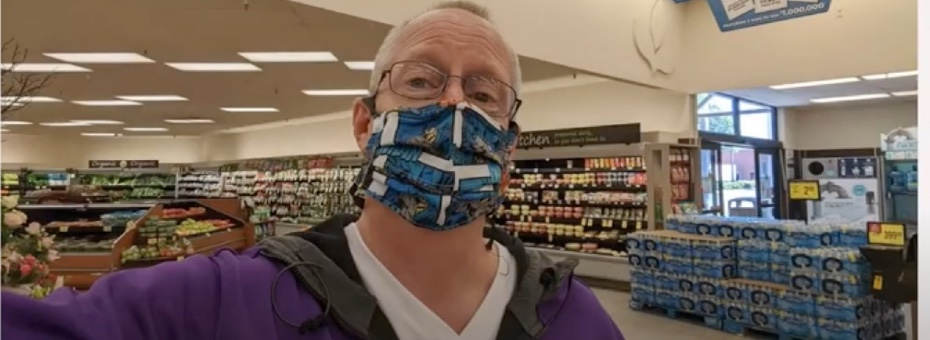Part 2 of 2. Be sure to watch The Art of Lean: Must Knows for Coaching the Corrective-Action Phase of Problem-Solving, Part 1, in which Art explains the A.D.P. methodology and how to use it.
Hi everyone. This is Art Smalley, President of Art of Lean, Incorporated. And today, on behalf of the Lean Enterprise Institute, I have another short video for you. This video is a follow-on to one I did previously. I introduced the acronym that I use in problem-solving, coaching, teaching, and training called ADP, for administration, detection, and prevention. I use it whenever I look at corrective actions or countermeasures — whether they’re my own or I’m critiquing somebody else’s — to see what category they’re falling into, and what likelihood they have for success. So please review the previous video if you haven’t seen it.
Briefly, “A“ stands for administrative countermeasures. These are the weakest. You try to administer the person, the human side of it, with training, documentation, alerts, and things like that.
Second, there’s a detection type of countermeasure category, which is more arobust, catch-it-in-place, detect it, catch it type — judoka in Japanese.
And third is the ultimate where you want to go. Are your countermeasures getting to that “P” category, preventive in nature, which stop the underlying conditions and prevent this from occurring or reoccurring? And that’s quite difficult, and sometimes you go through a phase. Sometimes you jump straight to the piece. Sometimes you aren’t that lucky, or it’s difficult.
Now let’s look at the SARS, Covid-19 crisis as an example. Okay? I just want to use the countermeasures in place or corrective actions being proposed by various figures in authority and show how they fit neatly into these three buckets.
Administrative
First off, we can start with the administrative ones, and those, of course, are the ones that you can do right out of the box, immediately. Okay?
You can probably think of things like handwashing and sanitizing, social distancing, maintaining gaps of six feet or two meters, and wearing a mask to stop the transmissions. Covid-19 is a respiratory disease, so you can prevent the transmission, limit it, excuse me, to some extent.
And, of course, the more extreme things, the shelter in place we already went through once. Quarantines go back to the middle ages, and plagues, they’re nothing new. So there is an administrative category of things being suggested and enacted, and you can see some hit and miss with them. Some people follow, some people don’t. It’s not a hundred percent. They’re not the strongest form of countermeasures.
Detection
A level up from that, of course, are detection-based ones. And if you stop and think for a second, what are detection based ones? Well, you can think of simple things like scanning temperature, looking for that. That’s an early indicator, but not it’s too late. We can do the swab testing to see if you have the virus or not. You can do the blood testing to see if the antibodies are present, if you’ve had it or not. And there are things like wastewater treatment detection where we can see what’s occurring on the wastewater system, and that can tell whether there’s a high incidence of the infection in a given community or not. Okay?
So they’re not ideal countermeasures, unfortunately. Those detection-based ones are the ones we currently have or see in the press, but they’re not immediate. They don’t stop it in its place. They’re not as good as the judoka concept that we strive for in most of these areas, and our work is still cut out there. But they can work. Detection and social contact tracing have proven effective in South Korea, Taiwan, some other places.
Prevention
But, of course, where we want to go with this ultimately is the “P” category, prevention. Okay? And the things in terms of prevention that have been talked about somewhat, healthy immune system, being in shape, those people are faring better. This disease discriminates more against the aged and the people with underlying conditions, unfortunately. You want to build up your immunities to be as healthy, as much as you can. And third, of course, we’re going for the vaccine. They’re fast-tracking various vaccines, and they’re hopeful that one will work and will prevent it. In theory, if you take the vaccine and it’s safe, you’re prevented, like from the flu shot, the annual flu shot.
And fourth, you can go into the pre-occurrence mode or re-occurrence mode. And for that, it doesn’t matter whether this came from a seafood, wet-food type of market or a laboratory. Conditions existed that allowed this to come out. And you’d want to get to that point of cause, point of origin, which they a hundred percent don’t have at this point. But what allowed that to occur? And have true recurrence, preventative countermeasures that stop that underlying condition.
Now animal-to-human, human-to-human viruses mutate. And at that fundamental level, you can’t change it. But in this one instance, of course, you can go back and look at what transpired, hopefully, and see what allowed that and prevent that from occurring. And that’s where pre occurrence, reoccurrence prevention strategy would also go.
So, I hope that acronym works and puts some sense into our chaotic daily lives here. And when it comes back to normal work, and you’re thinking about problem-solving and coaching, please think through those categories: A.D.P.: administration, detection, and prevention, and making sure you’re coming up with the strongest ones possible. And with that, I hope everyone stays safe and has a great week. We’ll see you in the next video.
Thank you.






